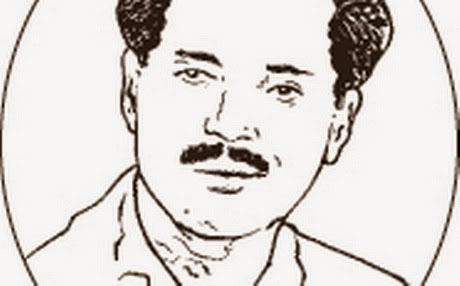 The fertile Kongu
region, whose people were once inseparable from the occupation of agriculture,
has gradually lost its cultural identities due to rapid urbanization at the
cost of agriculture. And it sad that the region’s rural fragrance with its unique
culture can be experienced only from the short stories, novels and poetry
penned by the region’s popular writers.
The fertile Kongu
region, whose people were once inseparable from the occupation of agriculture,
has gradually lost its cultural identities due to rapid urbanization at the
cost of agriculture. And it sad that the region’s rural fragrance with its unique
culture can be experienced only from the short stories, novels and poetry
penned by the region’s popular writers.
Hence, in order to
introduce the realistic lives portrayed in the works of eminent Kongu authors, the
Tamil Cultural Centre of Dr. N.G.P Arts and Science College in the city has
recently brought out a book Kongu Manam
Kamazhum Padaipukal ( The literatures filled with the fragrance of Kongu
culture) compiling articles from various research scholars on the works of as
many as nine eminent Kongu writers including the yesteryear personalities R.Shanmuga Sundaram, M.P. Periyasamy Thooran,
Era Vadivelan and Ku. Chinnappa
Bharathi.
“The Tamil Cultural
Centre is committed to work for the development of Tamil by bringing out such
valuable books on the works of Kongu writers” says Dr. Nalla Palanisamy,
President of the cultural centre and publisher of Kongu Manam Kamazhum Padaipukal.
 The book, which is
edited by Sirpi Balasubramaniam, popular Vanambadi poet and P. K. Ponnusamy,
Former Vice-chancellor, University of Madras and Madurai
Kamaraj University,
introduces the Kongu writers with critiques on their respective works.
The book, which is
edited by Sirpi Balasubramaniam, popular Vanambadi poet and P. K. Ponnusamy,
Former Vice-chancellor, University of Madras and Madurai
Kamaraj University,
introduces the Kongu writers with critiques on their respective works.
“Kongunadu was a
separate region with its unique tradition and culture, though it was under the
rule of Cheras, Cholas and Pandyas in different periods. This fact can be
understood by reading ancient pieces of Tamil literature including Purananuru, Pathittrupaththu and Thevaram” writes P.K. Ponnusamy in his
foreword to the book.
Speaking on the literary
glory of Kongunadu, Ponnusamy points out that the land was also the birth place
of unique pieces of Tamil literature including Perunkathai by Konguvelir, Thakkai
Ramayanam by Emperuman Kavirayar and Ravana
Kaviyam by Pulavar Kuzhanthai.
On the trends of
writing regional literature, K. Panchangam, eminent literary critic, says:
“R. Shanmugasundaram
from Keeranur in the then Coimbatore district
pioneered the trend of writing regional fiction in the entire India through
his popular novel Nagammal in the
early 1940s. Moreover, the trend has gained momentum these days due to
extensive globalization, which has created an urge in regional writers to
document the disappearing cultural aspects of their respective native lands”
 In his article on
popular writer and editor of the ten- volume Tamil Encyclopedia M.P. Periyasamy
Thooran, Sethupathy, a research scholar, writes:
In his article on
popular writer and editor of the ten- volume Tamil Encyclopedia M.P. Periyasamy
Thooran, Sethupathy, a research scholar, writes:
“Thooran, who was
born in 1908 at Manjakaattu Valasu in Erode in the then Coimbatore district,
penned plenty of books from short story collections to science fiction,
portraying his land and people in a realistic manner”
Mahudeeswaran, Tamil
professor and research scholar, opines on the works of the late poet Vadivelan:
 “Vadivelan developed
his passion for writing after inspired by the literary activities of his
grandfather, who had staged several plays including Vaanaasura Natakam, Ottakootha
Natakam and Silapathikara Natakam at
his village Perodu near Erode.
“Vadivelan developed
his passion for writing after inspired by the literary activities of his
grandfather, who had staged several plays including Vaanaasura Natakam, Ottakootha
Natakam and Silapathikara Natakam at
his village Perodu near Erode.  The book Kongu Manam Kamazhum Padaipukal also
contains articles on the works of contemporary Kongu writers K.Rathnam, Perumal
Murugan, C.R. Ravindran, Ma. Natarasan, Suryaganthan, Patchi, Sivakumar and
Pazhaman.
The book Kongu Manam Kamazhum Padaipukal also
contains articles on the works of contemporary Kongu writers K.Rathnam, Perumal
Murugan, C.R. Ravindran, Ma. Natarasan, Suryaganthan, Patchi, Sivakumar and
Pazhaman. Link to my article in The New Indian Express:http://epaper.newindianexpress.com/c/2063208

























